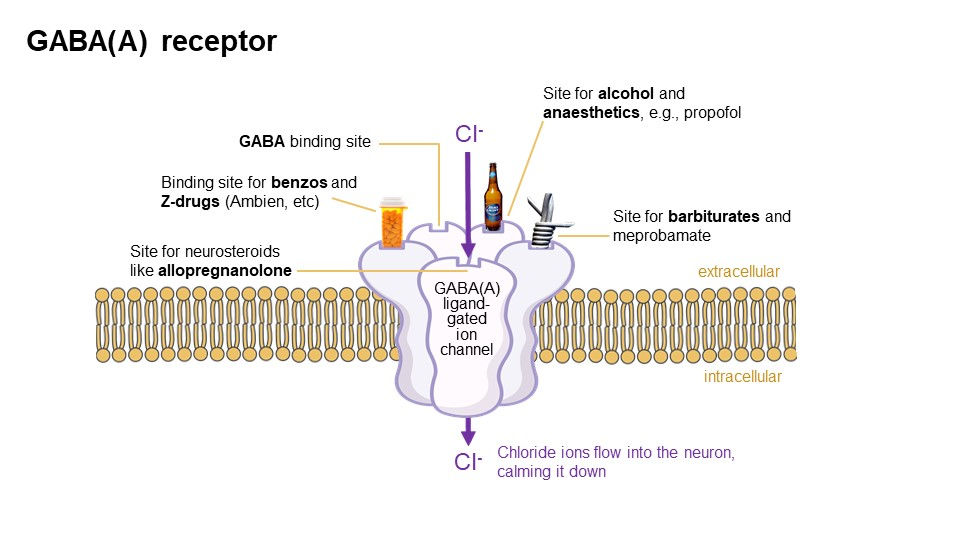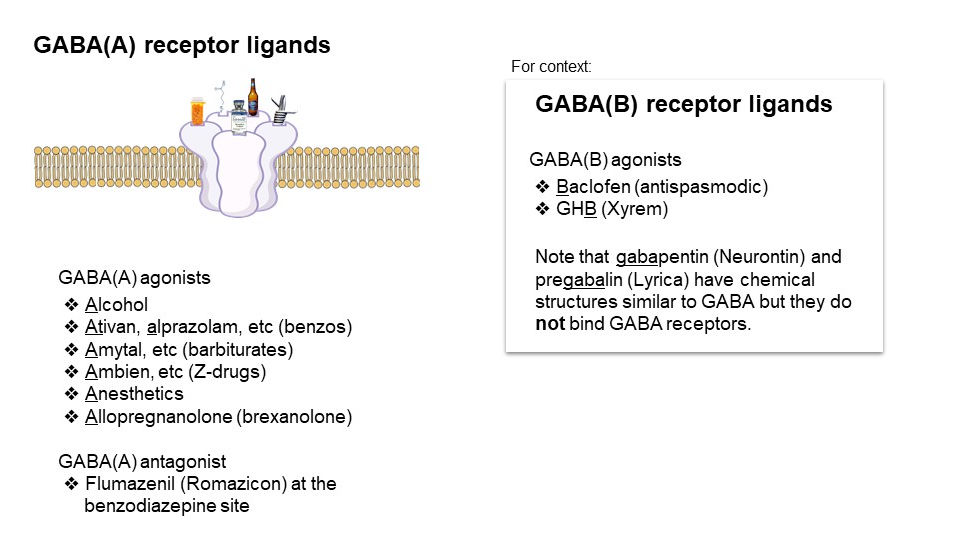
Brexanolone (ZULRESSO)
Brexanolone (ZULRESSO)
In 2019, the first two novel antidepressants in over three decades were approved—esketamine (Spravato) and brexanolone (Zulresso). Brexanolone is the first medication FDA-approved for postpartum depression. Brexanolone is a synthetic version of allopregnanolone (“all pregnant and alone”), an endogenous neurosteroid made from progesterone that is increased during pregnancy.

It is theorized that withdrawal from allopregnanolone after childbirth can lead to postpartum depression and anxiety. Conventional antidepressants are known to raise levels of endogenous allopregnanolone.

Brexanolone acts at the GABA-A receptor complex, as do several classes of drugs that calm down the central nervous system, including benzodiazepines and barbiturates (see below). Unsurprisingly for something that works through the GABA-A receptor, brexanolone has anxiolytic, sedative, and anticonvulsant properties.


Brexanolone is insultingly expensive and must be given as an IV infusion over 60 hours! The cost of the drug is $34,000 not including the cost of hospitalization.
The advantage of brexanolone is speed of symptom improvement. Roughly 75% of patients reported at least a 50% reduction in depressive symptoms. Remission of depression may occur within a couple of days. 94% of patients who responded maintained their response at one month. Not bad!
It appears to be safe with breastfeeding—“Brex (feed) alone”. The infant receives only 1–2% of maternal weight-adjusted dose. Excessive sedation is possible, so another adult should be present during treatment when mom has the baby. So you’re technically not supposed to brexfeed alone on brexanolone.
Oral brexanolone is in development.
Allopregnanolone balance may play a role in other psychiatric disorders. Low levels are associated with depression and PTSD. High levels are also associated with depression, as well as anxiety and irritability (Bäckström et al, 2014).
Dosing: Given intravenously over 60 hours; Start 30 mcg/kg/hr for 4 hours, then 60 mcg/kg/hr for 20 hours then 90 mcg/kg/hr for 28 hours, then 60 mcg/kg/hr for 4 hours, then 30 mcg/kg/hr for 4 hours = 60 hours total